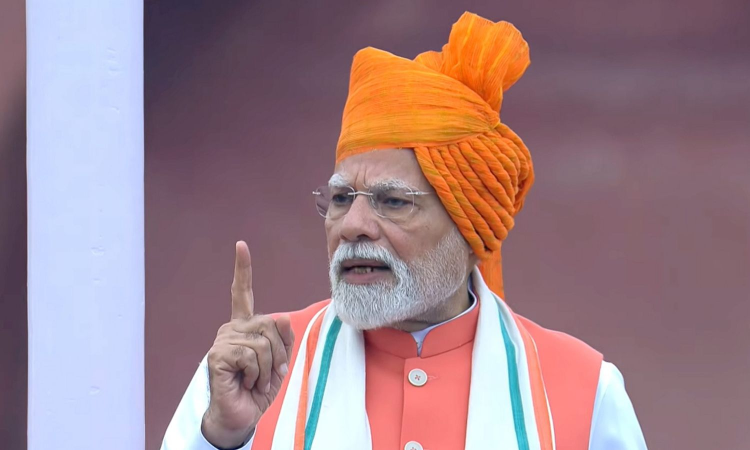Editorial: Smoke signals from Red Fort
One was a detour to praise the RSS, and the other raised alarm over changes being wrought, apparently conspiratorially, to the demography of the country — the “seeds of a new crisis” as he phrased it.

Prime Minister Narendra Modi
Independence Day speeches from the Red Fort are, conventionally, vision statements by the Prime Minister of the day. They call the nation to unity and lay out a programme of nation-building. In his 11 years in office, Narendra Modi has, by and large, conformed to this convention despite his penchant for polarisation. His divisive avatar manifests itself when he is on the stump; while delivering the Red Fort speech, however, he is prime ministerial. Being an imposing backdrop, the fort makes I Day speakers say grand things.
The 2025 edition of the Red Fort speech mostly respected this convention. But towards the end of his 103-minute oration, Prime Minister Modi digressed to make two points that have piqued critics’ interest. One was a detour to praise the RSS, and the other raised alarm over changes being wrought, apparently conspiratorially, to the demography of the country — the “seeds of a new crisis” as he phrased it.
The nod to the RSS was remarkable for its incongruity, both with the setting as well as the occasion. Within modern India’s iconography, the Red Fort is a legacy of Shah Jahan, whose dynasty the RSS treats as foreign and would rather erase from the nation’s memory. To the Sangh Parivar, it remains an edifice to conquer rather than an inheritance to receive. The other incongruity is that the Red Fort speech is meant to celebrate the freedom struggle — to which the RSS never contributed. So, Modi’s unprecedented inclusion of the mother ship of the Sangh Parivar in the Red Fort scroll of honour did not quite square with his eulogy to the makers of the Constitution in the same breath. When the Constitution was adopted, the RSS rejected it and remained hostile to it for half a century. It would not deign to fly the Indian Tricolour atop its Nagpur headquarters until 2002.
The PM’s critics say there is a political calculation behind his tipping of the hat to his parent organisation. Senior leaders of the RSS have been noncommittal about his continuance in office after he attains 75 years of age on the 17th of next month, following a principle that he himself instituted and used to put his seniors out to pasture. Is his praise of the RSS an overture to the senior functionaries to let him continue in office? Or was his pointed description of the RSS as the “biggest NGO in the world” a reminder to them of its self-awarded mandate of being a “cultural” organisation with no role in statecraft? After sarsanghchalak Mohan Bhagwat said recently that political leaders must retire at 75, questioning glances have been cast at Modi, including within his party. While the Prime Minister’s speech made no mention of any retirement plans next month, the fact that he spoke enthusiastically of longer-range programmes indicates he does not have any.
As for the PM’s “grave concern” over “a deliberate conspiracy” to alter the demography of the country, the speech clearly signalled that immigration will be the BJP’s big issue in the months ahead, particularly in the West Bengal elections in 2026. The announcement of a “high-powered demography mission” shows a clear intent to scale up the decibel level. “These infiltrators are snatching away the livelihoods of our youth,” said the PM, using a universal anti-immigrant trope. And then he added, “These infiltrators are targeting our sisters and daughters.” Which, alas, can become a cue to the forces of Hindutva.



